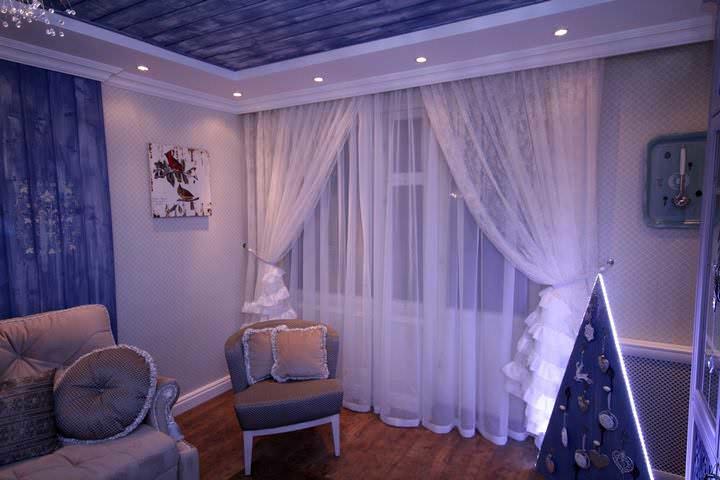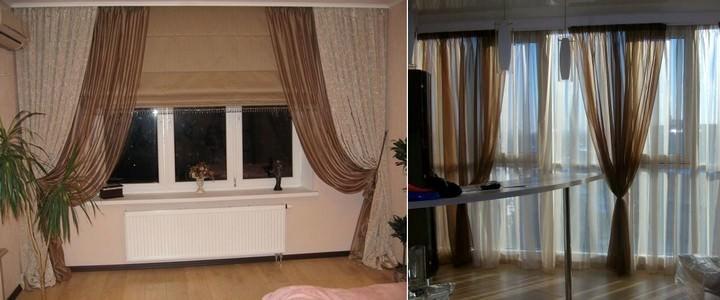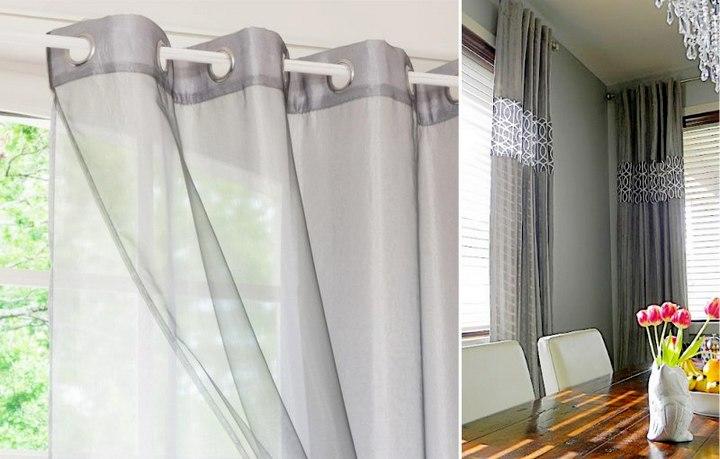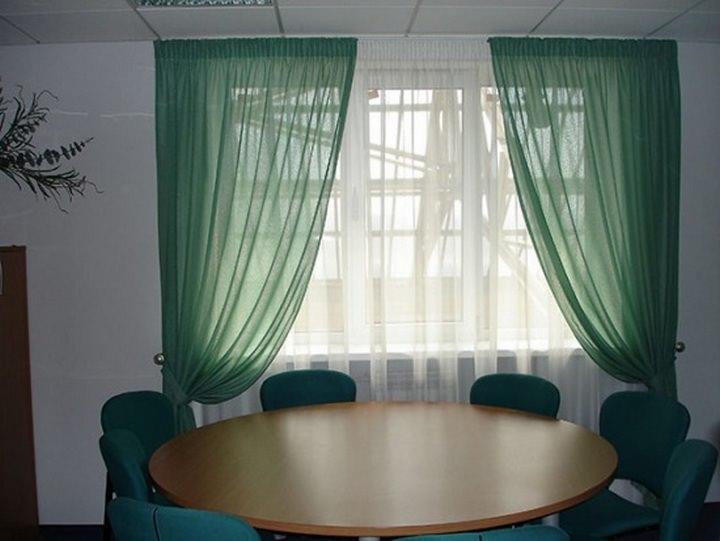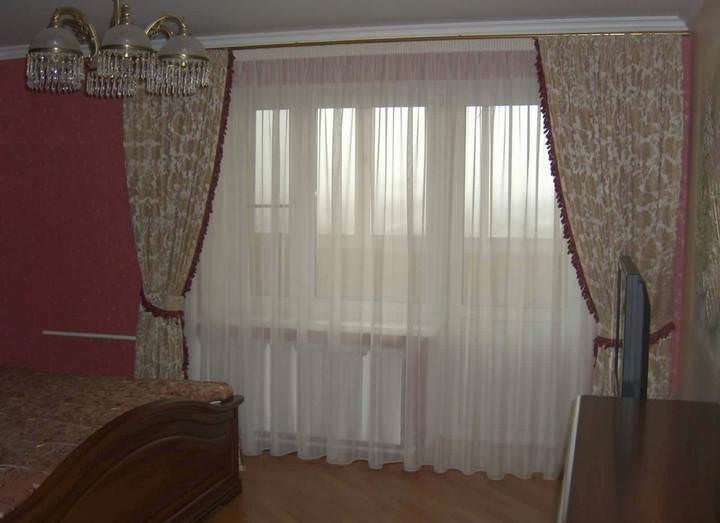Stylish tulle on the windows: photo in the interior
With the help of light flowing tulle fabrics, you can give any interior a unique appeal, add a touch of airy magic. The living room, bedroom, kitchen will literally appear in a new light: colored tulle lets the sun's rays through, tinting them with magical shades and changing the overall visibility in the room. The use of this material in window decoration is always an unmistakable choice. The design style and colors are influenced by fashion, but the tulle itself is always relevant.
Tulle allows you to embody any design idea. Today, this material is represented by a number of its varieties, differing not only in color and pattern, but also in type and texture. When choosing a material, you need to pay attention to its quality and carefully consider the selection of the desired shade, take into account the ability of different fabrics to transmit light differently.
The main characteristics that you need to pay attention to when choosing a tulle:
- Material type;
- Texture and density of the fabric;
- Color and pattern.
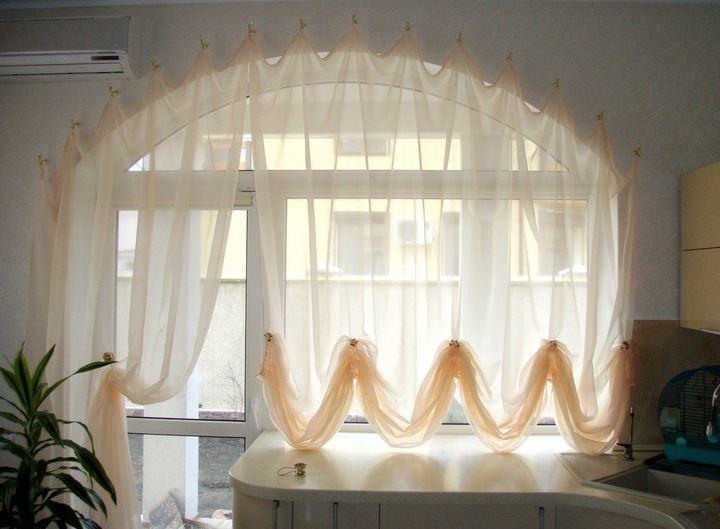
For window decoration, the following types of tulle are most often used, such as:
- Organza;
- Grid;
- Veil.
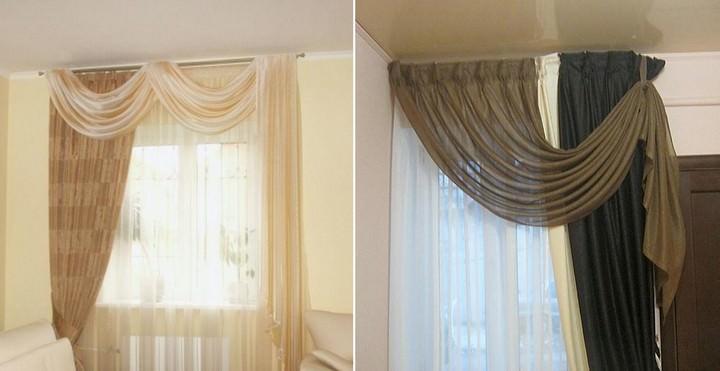
Most often, tulle fabric is made from materials such as:
- Silk;
- Cotton;
- Viscose;
- Lurex;
- Polyester;
- Polyester and polypropylene threads.
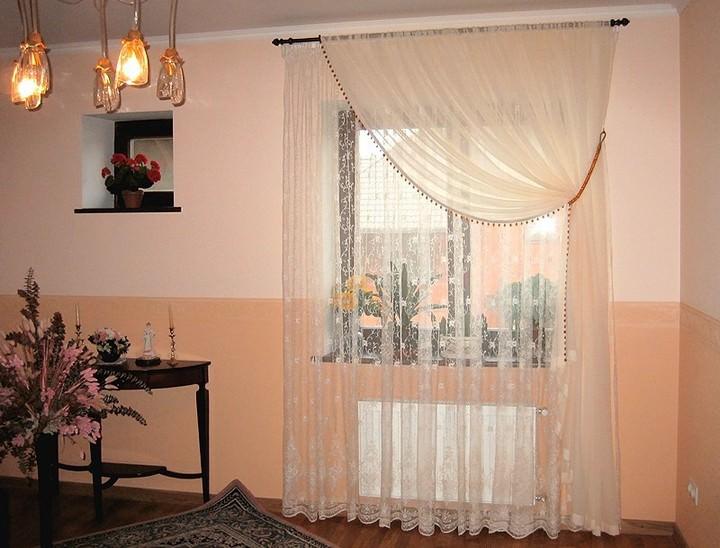
According to the type of threads included in the composition, tulle is distinguished:
- Single component– the fabric is 100% composed of only one type of material (only cotton, only polyester, etc.);
- Multicomponent- different types of threads are combined in the composition of the fabric.
Tulle made from natural materials is, of course, more environmentally friendly, but it costs a little more and can withstand fewer washes, loses its visual appeal faster than synthetic. Given all this, experts advise choosing a multi-component tulle, which, along with natural materials, uses a synthetic base.
How to choose tulle: options (video)
Varieties of tulle by texture
Different types of tulle have different textures and densities, which means they transmit light differently and look different in different lighting conditions. Some types of fabric are able to flow and shimmer in the rays of the sun, others, more dense, create a cozy romantic twilight in the room.
Texture tulle can be:
- Smooth (smooth);
- Mesh;
- Patterned (intricate hemstitch, which gives the impression of a magical weightless lace).
In addition, curtains are often decorated with intricate embroidery, magnificent frills, which give additional “richness” to its appearance.

A well-chosen pattern looks great on a delicate fabric, becoming the main focus of the design. But when choosing a decorated tulle, you need to remember that the main thing is that the drawing is not only beautiful “in itself”, but harmoniously fits into the overall look of the interior and suits the style. With all the variety of plot design of tulle, it can be a difficult task to find the right one for you. Therefore, recently the popularity of applying images to tulle using photo printing, silk-screen printing or the old batik technique has been growing. Using these methods, you can create unique patterns on fabric. And if you are not satisfied with the gray and banal landscape outside the window - tulle with a plot pattern will help you easily change it and turn the window into a magical portal into the dimension of your dreams.
Thus, tulle gives the interior a special personality, allowing you to realize any creative idea, create a design, as in the photo in glossy magazines. By the way, photos can also suggest interesting ideas on how to better tell tulle, because using various options for layering fabric, beautifully arranging folds, you can achieve amazing beauty of the design.
Tulle to the windowsill: a practical solution
The shapes of tulle curtains and their lengths are varied. These are flowing curtains to the floor, tulle beads, “noodles” (similar to blinds), magnificent arches framing the window with an intricate and rich pattern. Looking through the photo of the curtains, you can be amazed at how diverse the tulle is.
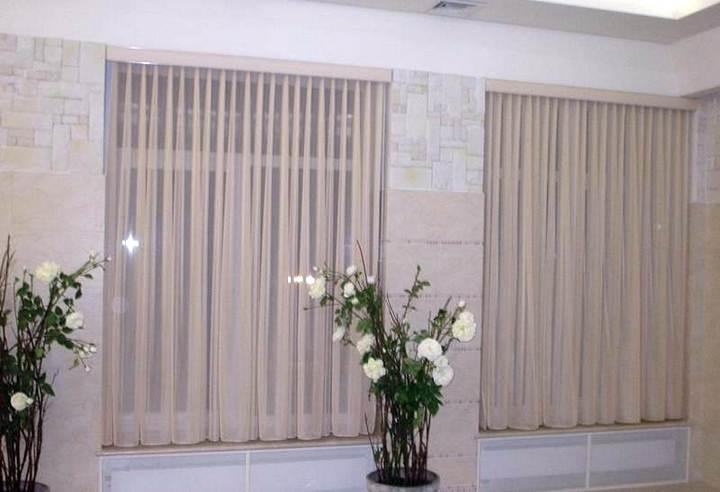
According to the stylistic design, you can also choose your own type of curtain, which will harmoniously fit into the design of the room and will be an excellent window decoration.
Thanks to various ways of fastening curtains and the use of various decorative hairpins and ribbons, you can easily change the look of the room “to suit your mood”.
So the tulle will get less dirty, because it does not come into contact with the floor. And besides, this choice will be the best in the limited space of a modern standard room or kitchen. If a “long canvas” of fabric can visually limit the space of a room, then a short airy fabric up to the window sill, on the contrary, creates the effect of “space”. Undoubtedly, tulle is a better choice than blinds. By combining light tulle with thick shade curtains, you can create a rich and stylish design.
Types of tulle in the interior (video)
Playing with light
When choosing tulle, it is important to choose a combination that matches the color of the wall and harmoniously fits into the design of the room.
Tulle looks great in combination with curtains made of thicker fabric. Due to this, you can not only adjust the degree of illumination of the room, but also achieve interesting visual effects from a combination of different materials and textures.
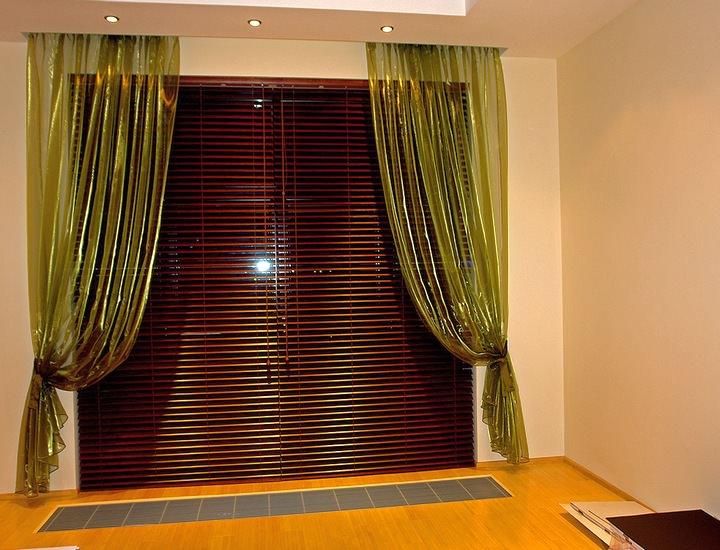
Color combination options:
- Delicate shades of joy in the interior. Light fabrics in warm pastel colors will help illuminate a room whose windows overlook the shadow side. Solid color tulle of bright color will always make it more expressive and comfortable for spending time. A bright spacious room does not need extra shading either: a curtain made of light tulle of delicate peach shades or the colors of the dawn will help to soften the too bright rays a little, giving their light a magical soft shade. This choice is suitable for both the living room and the kitchen. It is pleasant to drink coffee in the morning, watching the play of light in the patterns of the finest mesh or on the folds of a shiny organza. This design looks spectacular in the photo. And also, as psychologists say, bright colors and a play of cheerful light shades are an excellent prevention of autumn-winter depression and a way to settle a positive and joyful mood in an apartment.
- color mix. Light tulle goes well with dark curtains. This is a universal solution that will probably never go out of fashion. Also, a combination of dark and light tulle gives an excellent effect. The intersection of several layers of tulle of different shades creates a unique effect. Here it is important that the colors are harmoniously combined with each other and the design of the room.
- Romantic dark tulle. If the windows face south, the light can be dimmed by using dense tulle of dark and cold shades for the windows. Such tulle in combination with curtains, decorative ribbons and flowers will help create a romantic twilight in the bedroom.
Window decoration with tulle: we select tulle for the style of the interior
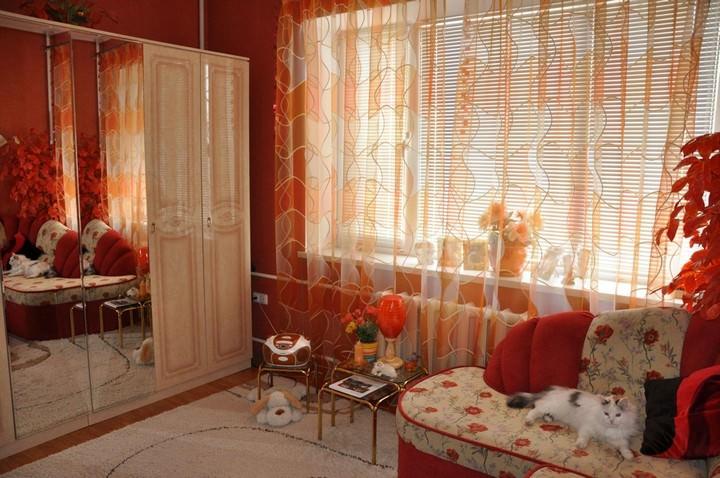
Here are some tips on how to find the right combination:
- Minimalism always in fashion and suitable for decorating any premises of an ordinary modern apartment. A straight canvas may seem like a banality only at first glance: a non-standard pattern, hemstitches, well-chosen colors of tulle can transform the interior. For example, for a kitchen decorated in a classic style with wooden furniture, a curtain made of light tulle with a pattern of small flowers or “floral” frills will look great. For a kitchen with a small window, a short tulle is perfect.
- Curtains-threads and curtains-beads made of transparent fabric, as well as “noodles” with beads, is a winning and practical option that is suitable for any room - both for the official style of an office or study, and for a room, kitchen or even a hallway. These types of curtains are similar in shape to blinds. But the visual texture, lightness, the ability to “play” in the light makes them more attractive than the actual usual blinds.
- Classic blinds and tulle. By the way, it is worth noting that you can achieve interesting effects by combining tulle with blinds. For example, an arch made of light fabric over the blinds will be a great solution for a study window. This design corresponds to the business style, but at the same time adds a touch of individuality.
- To the style of extravagant baroque or rococo A multi-layer curtain made of tulle and fabric of various textures is perfect, using a spectacular combination of lace, muslin, patterned mesh, and colored organza. Such options will look elegant and rich, as in the photo in fashion magazines.
- For an interior in modern or high-tech style a great solution would be to opt for transparent tulle with a creative geometric pattern. As if “hanging” in the air, the intersection of figures or straight and broken lines, combined with the play of light, can create truly fantastic and futuristic visual effects. It will look especially creative at night in the rays of the moon or lantern light. Metallic threads can be used as accessories, which will give an additional shine effect.
- Tulle with a beautiful large pattern can become a key design element of the room. A bright original pattern will help visually expand the space. It is well suited for a room with a small window, such as a kitchen or bedroom.
- For children tulle, decorated with a large plot pattern or colored tulle with small funny patterns, is perfect.
Airy tulle on the windows (video)
With the right choice, tulle will be an excellent decoration for any window and will successfully fit into any style and design of the room. Expert advice and photos with ideas will help you decide on the right choice of your tulle. And of course, the main thing is fantasy, which will help you find a non-trivial solution for a comfortable and stylish design of the space of a room or office.
Tulle design on the windows (photo)

